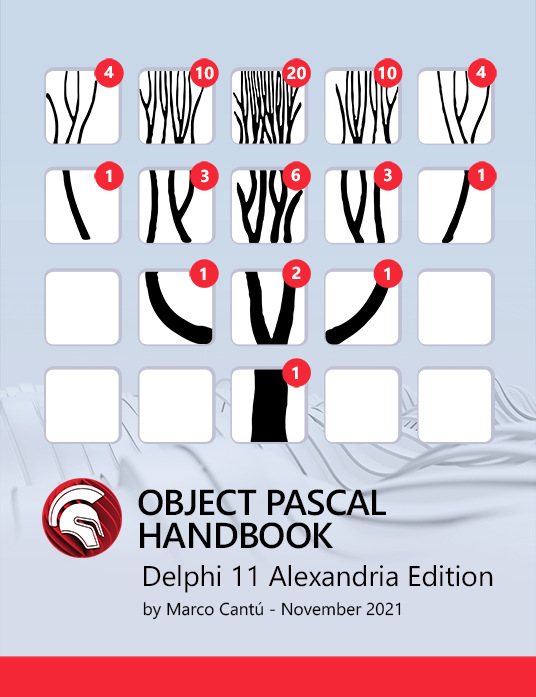
Over the past couple of years, cross platform desktop app development has been getting a lot of attention. Developers want to build apps that can be used across multiple platforms, like Android, iOS, and Windows. It’s a trend that’s been gaining momentum over the past few years, and there are plenty of tools and frameworks available to help you do this.
Many have turned to third-party libraries, tools, and other ready-made solutions to help with their cross platform development needs. However, there is always a possibility for some drawbacks. With this in mind, we’ve decided to put together some tips you can consider for a project involving cross platform desktop app development. First, though, let’s start with the basics.
Table of Contents
What is cross platform desktop app development?
Cross platform desktop app development involves the use of different frameworks and libraries to develop a native app that can be used across multiple platforms.
With cross platform native desktop app development, you can develop your app for the Windows, Mac, Linux, and Android platforms all at once. The primary benefit of this is that the code is shared between all of these platforms in a single codebase. This makes it easier to manage your code and save time when you are building your app, as you don’t have to pay for each platform’s native SDK or create a separate version of the app.
However, with cross platform native desktop app development comes certain challenges. One main drawback that many developers come across is that they have to sacrifice a lower performance or user experience to compensate for cutting back on time and cost.
Still, there are many benefits to using cross platform native desktop app development. By using the right tools, you can get a wider range of users and expand your reach across all the platforms that you support with little fuss.
What are the challenges of cross platform desktop app development?
When you start building a cross platform native desktop app, there are a few challenges that you should be aware of. Here are some of the most common ones:
- Errors when transferring codes. Trying to transfer your code to different platforms can cause errors. Sometimes, it may even lead to partial loss of your codes. A code for a certain platform may not always be compatible with another platform. If you’re using a third-party library or app builder software, you need to make sure that it’s compatible with the other platforms. Some libraries may be not as stable as others, which can cause issues when transferring your code to the different platforms.
- Testing your app on all platforms simultaneously. You’ll need to test your app on all the different platforms at once, which is time consuming and may take up more time than expected. You also have to ensure that everything works correctly before going live with your app on the different platforms, as this can save a lot of time and money in the long run.
- Non-compatible languages for each platform. Not all languages are compatible with each other, which can cause errors when trying to transfer codes or creating new apps from scratch for each platform individually. The problem is even worse if you’re working with multiple languages simultaneously like JavaScript and Python or Java and C++ at the same time! It’s important to find out if there are any non-compatible cross platform programming languages. Do this before developing your cross platform apps, so you don’t end up wasting time.
- Time-consuming coding and prototyping. The more platforms you work with, the more difficult it is to keep track of your code and how it’s going to work across all the platforms. Prototyping and testing out multiple versions may take lots of time, especially if you don’t have a dependable application builder software to streamline the process.
How do you deal with cross platform desktop app development challenges?
The above are just some of the possible issues you’ll come across when building a cross-platform application. The good news is that there are some tools and frameworks that can help you overcome these challenges. There are a few different ways to tackle these possible issues.
1. Choose the right cross platform app development framework
If you’re working with a library or framework that’s already meant to optimize as a multi-platform application builder software, you’ll have a lot less work to do. For example, you can use the popular framework RAD Studio, which is a full development suite that allows you to build apps for multiple platforms simultaneously.
This software also has some additional benefits, like the ability to create a single project with multiple languages, as well as a high-performance design and coding toolkit that makes it a perfect cross platform app builder. Whether you’re using a development app for a mobile application or one for desktop devices,
2. Make sure the IDE supports code completion and other insightful features
Code completion is one of the most useful features of an app builder. Development teams need to use code completion tools to make their work easier and faster. This can be done with any third-party app builder, but they can be very useful if you’re working with a cross platform native desktop app development.
So, you’ll need to look for a cross platform app builder that comes with code completion tools so you can create the cleanest code. Some cross platform development frameworks will also let you add custom breakpoints or debug functions, which can be very useful in dealing with basic code errors. This will help you build a fast and intuitive app for all the different platforms and devices that you aim to support.
3. Working smarter, not harder means using low code application platform
Coding is a critical development phase in any cross-platform desktop app building. A low fluency in the programming language or certain common code techniques can drastically impact developer productivity. This is why you need to use a cross platform app builder that has a low code application platform.
Low code refers to a cross platform app builder that lets you create your app with minimal code. This may mean that they incorporate interfaces that prioritize simplicity and ease of use. For example, some frameworks allow you to drag and drop the code from one project to another, while others may let you share code with your colleagues or create a single code base that’s optimized for the specific platform.
If you’re using an app builder that applies the low code approach, then you can avoid adding extra time-consuming coding steps. More time to focus on other elements of your app to optimize customer satisfaction!
Similarly, make sure to use frameworks that have ample support for your chosen basic front-end languages and back-end ones. RAD Studio, for example, provides support for basic Delphi and C++. With their built-in refactoring, you can also add custom features or code fixes easily.
4. Wireframes and mockups should be an intrinsic part of your chosen app builder software
Wireframes and mockups are a great way to visualize your app’s design and layout before you start building it. This can help you figure out how your app will look and function on different platforms. Wireframes are used to visualize the bare bones layout of your app in order to get the fist of its core functionality.
Once you’ve got the wireframes down pat, many businesses move on to mockups. Mockups are the final layout and appearance of your app, which are used to figure out all the necessary components and add the finishing touches. However, they’re usually static.
The traditional way of going about this was relying on pen and paper. Today’s digital tools, however, make it easier to create these prototypes and mockups in a few clicks.
So, to streamline the visual design process of your cross platform native desktop app, you’ll need to use a tool that has these features to visualize your app quickly and easily.
For instance, if you use the FireUI multi-device designer with RAD Studio, you can design your UI once and immediately have it run on multiple devices. Their component libraries and properties will also allow you to tweak your layouts without having to face a single line of code. This can help you seamlessly check the user experience and get feedback on your user interface before your entire application is ready for launch.
Furthermore, using their FireMonkey GUI framework, you can add many exciting visual components and complex animations to your application.
5. Can you customize any low code or cross platform apps to your own needs?
Customizability is another important feature to look for when working with a cross platform app builder. This doesn’t necessarily mean giving you lots of options in making your desktop app. Rather, it’s also about how easy the app builder itself is to use.
People in the past have come across issues with performance using certain frameworks. Such a situation can have significant negative effects on the efficiency of development for your app.
Get yourself a framework that will let you make changes to how the code editor looks and performs. Even something as simple as changing fonts and the way syntax highlighting looks can help you avoid critical performance issues.
You want to be able to customize how the app builder looks in a way that maximizes your comfort. This will help in improving an ease in navigation and usability in terms of performance, as well as the overall user experience. In doing so, you can put your full focus on cross platform development rather than figuring out how the app builder works.
Learn more about this easy-to-use tool called Kissflow which is one of the most popular low-code tools available today.
6. It should be easy to debug and deploy your apps with just a few clicks
Debugs are something that developers will always come across when they’re building a cross platform native desktop app. It is a step in which you aim to eliminate any errors and mistakes found throughout the development of apps.
The more debug features that your cross platform app builder comes with, the easier it will be for you to find the errors in your code. In addition, you’ll be able to test out your application on different devices and platforms before you go live with it.
Another thing to look for is how easy code sharing can be. Is there a history record that can be accessed by everyone from your developer community or team? How easy is it for your team to track the newest changes, and can you do this remotely? All of these additional tools and features can make your cross platform app development process a lot more efficient. Businesses looking to launch an app can use the additional time saved for other means.
Are you looking to start cross platform desktop app development?
Cross platform native desktop app development is a very time-consuming process. But it’s not impossible, and with the right tools and frameworks, you can achieve this without any issues. Your app will be more robust and stable across all the platforms that you intend to support with little sacrifice on your end in engineering cost and other aspects.
RAD Studio is one of the best cross platform frameworks out there. You can write the cleanest code and make use of code completion tools to make your development process easier. The components and libraries are also very powerful. Its reputation as one of the best low code platforms will help you add the finishing touches to your app quickly and easily.
Choose RAD Studio for a positive experience in cross platform application development. Develop the cross platform native desktop app of your dreams with RAD Studio!
Design. Code. Compile. Deploy.
Start Free Trial Upgrade Today
Free Delphi Community Edition Free C++Builder Community Edition





